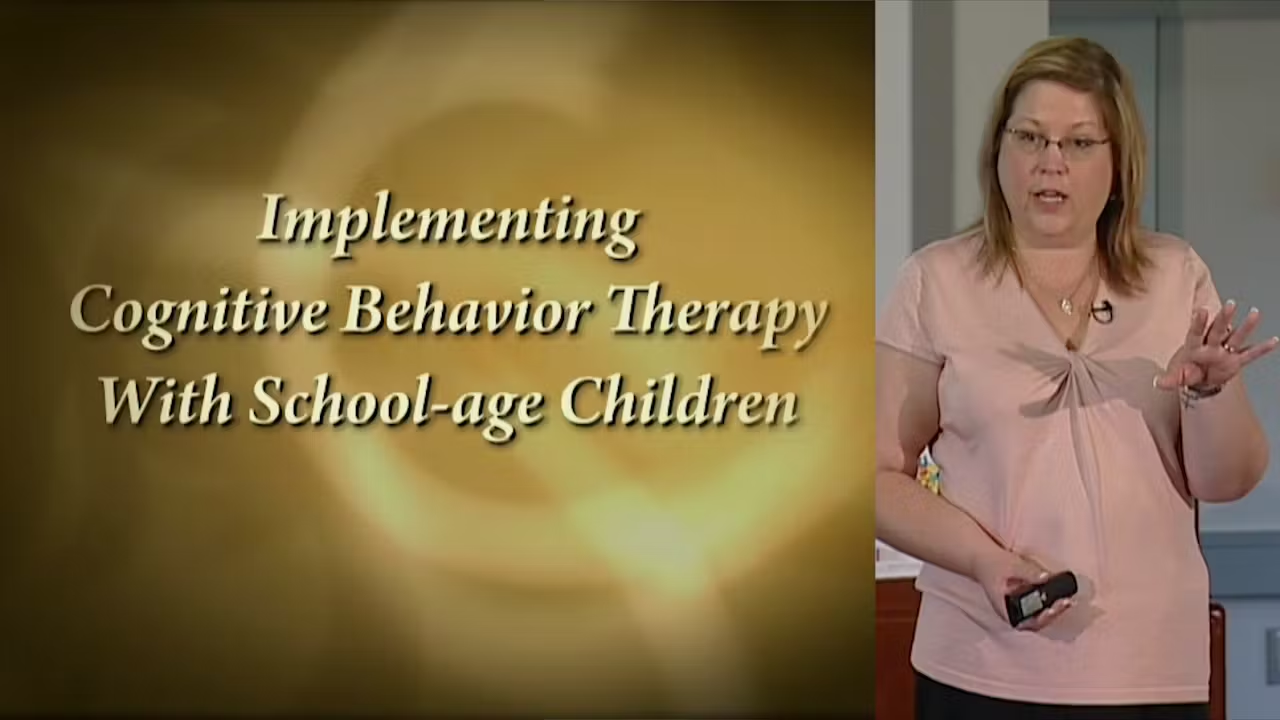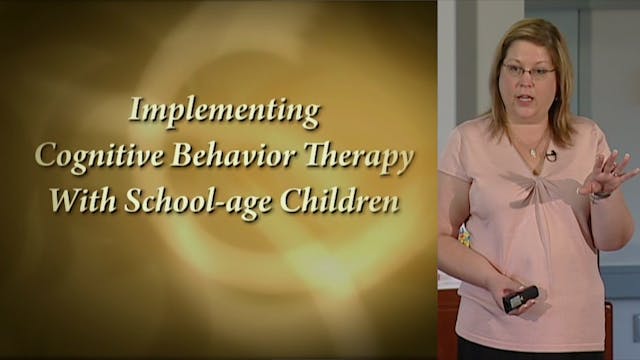Implementing CBT with School-age Children (#6500)
Cognitive-behavioral therapy is one approach for helping children change their thoughts and feelings about stuttering. These changes can lead to better therapy outcomes as children develop coping strategies, test their beliefs about listener reactions, and take risks like using speech tools in front of others.
In this 1 hour, 40 minute video, clinicians learn why unhelpful thoughts and feelings can interfere with stuttering therapy and then how to help children begin to make changes.
Extending the information presented in the Stuttering Foundation's program 9900, "A Cognitive Behavior Therapy Taster," Lisa Scott, Ph.D. of The Florida State University, presents concrete therapy activities for helping children learn to cope with difficult speaking situations, identify unhelpful thoughts, and strategies for trying out new thoughts and behaviors.
(start time) TOPIC
(00:00-) Introduction
(05:51-) The Cognitive Model
(06:55-) Why is it so hard to help children achieve speech change?
(10:27-) Possible Painful Experiences for CWS
(11:53-) Unhelpful Thinking Patterns
(17:09-) The Problem of Avoidance
(22:46-) Reducing Barriers to Changes
(27:52-) Strategy: Connecting Thoughts & Feelings
(56:57-) CSQ - Coping Strategies Questionnaire
(1:04:22-) Strategy: Behavioral Experiments
(1:13:07-) Strategy: Identifying Supports
(1:17:17-) Strategy: Increasing Coping Skills
(1:25:33-) Strategy: Behavioral Activation
(1:38:04-) Credits
Special thanks to the University of Iowa, The Florida State University, Stuttering Foundation workshop participants, and Patricia Zebrowski, Ph.D.
NOTE: To earn ASHA CEUs for this video, go to www.stutteringceus.org and select the ASSESSMENT ONLY option.
-
Implementing CBT with School-age Children (#6500)
Cognitive-behavioral therapy is one approach for helping children change their thoughts and feelings about stuttering. These changes can lead to better therapy outcomes as children develop coping strategies, test their beliefs about listener reactions, and take risks like using speech tools in fr...

